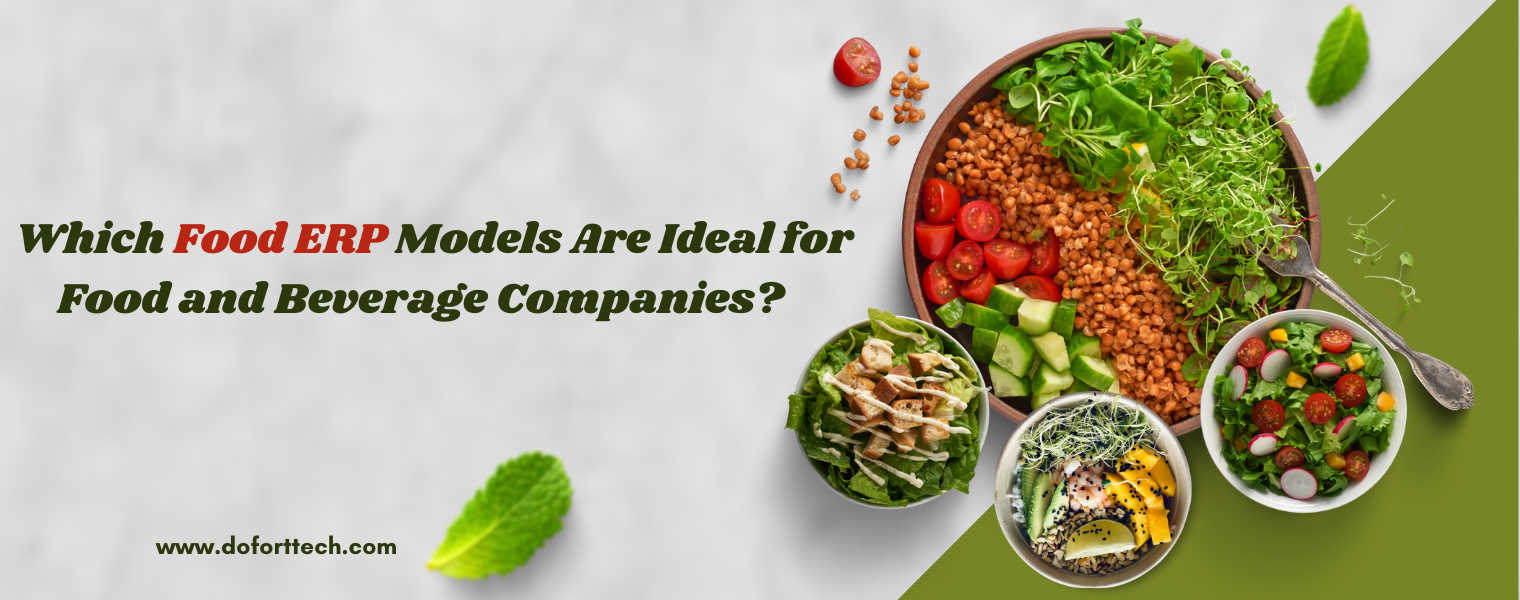
There is no better method to establish your food and beverage company when you're ready to do so than by using a food ERP. Before settling on a platform, we advise researching the various kinds of ERP to be as successful as possible.
To assist you reach the results you need more quickly, we're delving into the various food ERP options, the advantages from each food manufacturing software model, and implementation advice below.
Food ERP comes in a variety of forms, each with its own features and advantages. Every form of software for enterprise resource planning (ERP) we've described below uses the term "ERP" interchangeably to refer to the organization and workflow effectiveness it offers.
Below, we've outlined the three primary types of ERP to help you decide which could work best for your company at this time.
You get the same capability from on-premise ERP as you would from standard ERP software. The primary distinction is that your company's on-site internal servers are where the software is stored. Every style of ERP administration has its benefits and drawbacks, and this strategy is no different.
With this kind of ERP for the food industry, you have more control over the security measures taken to safeguard your infrastructure. If you're worried about data security or working with particularly sensitive material and don't wish to depend on a third-party vendor, this is a particularly competitive option.
However, this management option for your food production software has a few disadvantages. This management style typically has higher expenses because you'll need to invest again for hardware and installation procedure. Updates could cost more, and you'd have to spend more time managing directly, which would take time away from more important work.
Recent developments in cloud ERP have made it one of the most competitive solutions for your food and beverage software requirements. This is partly because it requires less maintenance once installation is complete and has an uncomplicated implementation approach. They offer greater options for improvement, innovation, and advancement because they are simpler to operate and deliver real-time organizational data throughout your firm.
Due to the fact that you won't be required to pay for the real physical hardware components linked with your programme management, cloud ERP solutions are typically less expensive than on-site options. To remain on top of your budgeting and expenses and to make sure that the choice you make is one that can be sustained financially over time, you should inquire for any applicable seat or license fees.
Before selecting cloud ERP as your preferred software for food manufacturing, there are factors to take into account, just like with any other sort of ERP. Due to the fact that you're depending on a third-party supplier to handle your data control and safety, security concerns continue to top the list of potential disadvantages. As long as there are no internet outages or breakdowns in your area, you can access your data remotely from any part of the world because you are relying on an external connection.
With hybrid ERP, you may get complete capability at a cost that is significantly lower by combining aspects of on-premise and cloud ERP. It is a leading option for food and beverage companies all around the world since it is dependable, flexible, and efficient.
You can anticipate those related costs to decrease when there is less physical hardware on-site. Your on-premise technology may also give you additional backup flexibility, lowering your need on a reliable internet connection and providing you with options in the event of a blackout. Updates, though, might take more time because they'll be fragmented and complex. Your team members can also have a steeper learning curve, which could result in extra expenses and missed time.
In the end, you want to get the most return on your ERP investment, and the best way to do so is to use it effectively. Our best advice for simple setup and onboarding is provided below:
Are you looking for software for your food and beverage business? Contact DoFort for Personalized
Food ERP
Solutions tailored to your Food and beverage Business.
Visit our
Website
to learn more or to get started right away. Contact us at info@doforttech.com or leave a comment for further details.We are eager to assist you.
Welcome to DoFort !